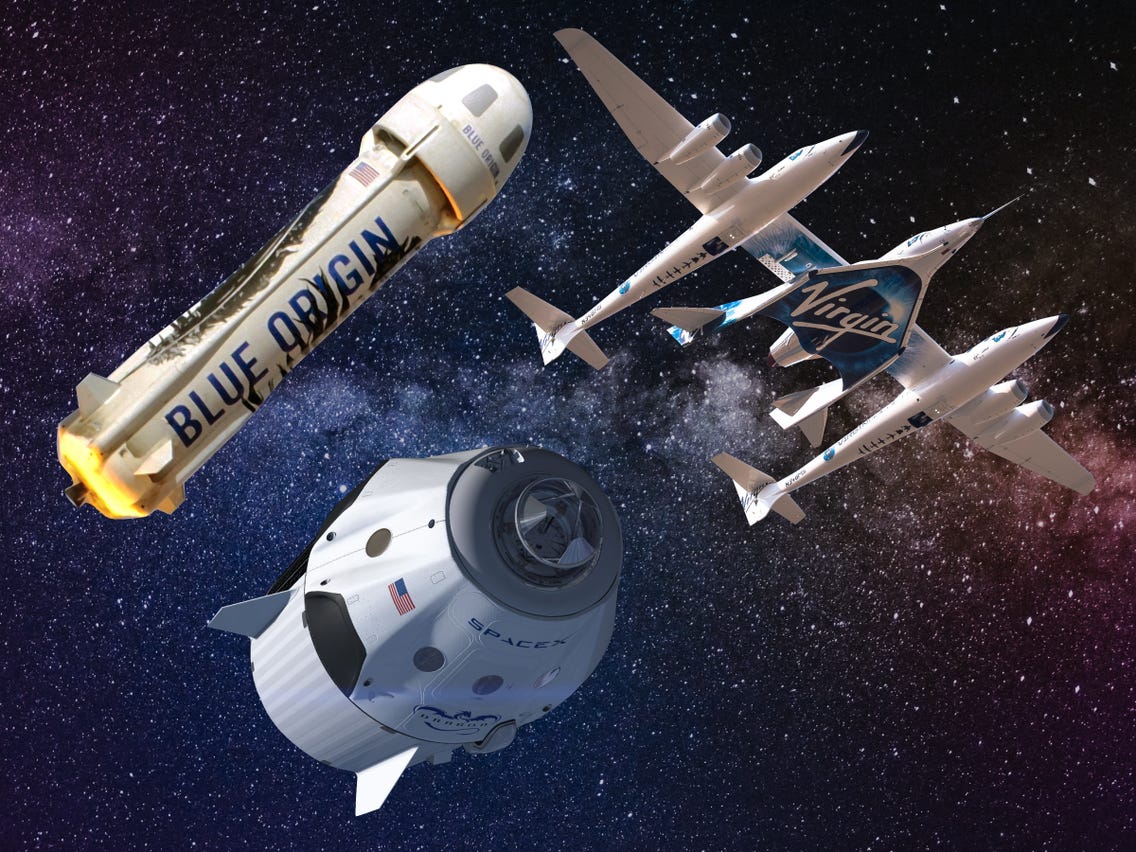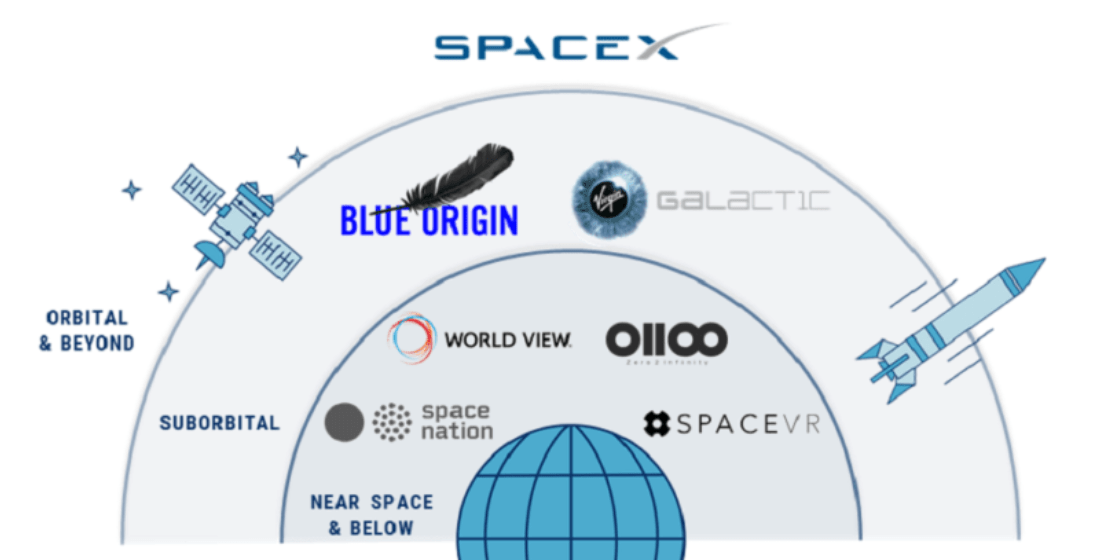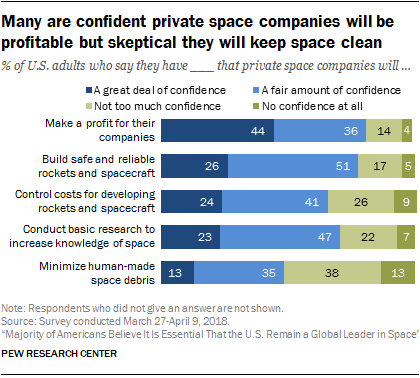They say Sky is limitless, well who can measure if one has not yet seen the dream to reach it.
The planet Earth has enough beauty and distractions to stay frosted on Earth while a few of us are surely bewitched by the Sky and the mysteries it holds, kept beyond the reach of Humankind.
But looking at the recent planned Space excursions, it does not seem to be the case anymore. Soon, the Space may become just another destination, just a bit more thrilling.
In a closest possible win, British entrepreneur Richard Branson took the flight ahead of Amazon’s Jeff Bezos into space aboard his own ‘Virgin Galactic’ winged rocket ship this Sunday.
In his most audacious adventure yet, the 71-year-old Mr. Branson and five crewmates experienced weightlessness for 3-4 minutes, being 88kms above the Earth’s surface and saw its curvature before gliding safely back home to a runway landing.
It also included an Indian-origin aeronautical engineer Sirisha Bandla, who became the third-one to fly in Space. While Mr. Branson became the first person to blast off in his own spaceship
He exclaimed: “Seventeen years of hard work to get us this far.”
There are no words to describe the feeling. This is space travel. This is a dream turned reality https://t.co/Wyzj0nOBgX @VirginGalactic #Unity22 pic.twitter.com/moDvnFfXri
— Richard Branson (@richardbranson) July 12, 2021
The entire flight to and fro, aboard the Space vehicle named Unity, completed within 15 minutes. Up above at 13 kms which is almost the edge of space, the space plane detached itself from the mother ship and fired its own engine.
Though He had no prior plans to fly until later this summer but he got himself assigned to an earlier flight once Mr Bezos announced his similar plans.
Are we amidst an upcoming Space Tourism race or a Space War?
As per The Space Report 2020 Q2: The Authoritative Guide to Global Space Activity, global space economy has boomed in recent times: $423.8 billion in 2019, a staggering 2.2% increase from 2018 and up a 73% for the decade.
Upon breaking-up its composition, we get the following in respective percentages:
- Commercial infrastructure and support industries, 28% ($119.17 billion)
- Commercial space products and services, 51.3% ($217.72 billion)
- U.S. government space budgets, 11.2% ($47.17 billion), and
- Non-U.S. government space budgets, 9.5% ($39.74 billion)
We can now see that the world has transitioned a long way since the first artificial satellite, Sputnik, got launched way back in 1957. Since then, the human race hasn’t stopped and aspired for even more to see that little blue dot in dark space.
History was written when SpaceX spacecraft carried two NASA astronauts on May 31 to the International Space Station.
The chief protagonists engaged in this race are the ones driving the provocation of Private participation in Space: Elon Musk with SpaceX, Jeff Bezos with Blue Origin and Richard Branson with his Virgin Galactic.
The three Companies, in tandem have been at the forefront because of the enormous wealth, fame, technology and above all, aspirations in the sector.
SpaceX for instance, after being found in 2002 by Musk has claimed that it wants to send a million people off to Mars by 2050. It has become a master of re-usable material vehicles and re-entry into the orbit and Earth.
Its Crew Dragon carried two astronauts recently to the International Space Station, placed into the intended orbit by Falcon 9, the world’s first orbital-class reusable rocket.
The Cargo Dragon (and not Crew Dragon, as this one is to carry ‘cargo’ composing stuff to ISS) has been the only one that services International Space Station and is capable of returning cargo to Earth, with no other spacecraft having been designed to survive re-entry into the Earth’s Atmosphere.
It has also operationalized the Rideshare and Starlink missions to fill the Universe with satellites of all kinds for a bigger purpose: make the Space travel easier and cheaper.
Bezos’ Blue Origin though found in 2000, has gained lesser publicity than the pretentious others but it came to fore during the controversial collaboration of NASA with SpaceX and supposed monopolization of Space.
Its New Shepard, the vertical-landing reusable vehicle to undertake Suborbital flights, has been successfully tested multiple times while it has New Glenn under development, to be a heavy-lift launch vehicle capable of carrying people and payloads for orbital travelling, across from this world and beyond.
Demonstrating reusability has become a key to the company’s business plan and consequently, its vehicles have repeatedly tested a series of flights.
No one has been on-board yet, but the company has been auctioning off one seat of its first upcoming flight to carry people on July 20, 2021. The capsule is supposed to carry six people at most and the company faces controversies for its seat-sharing revelations.
Many Space companies around the world are even keen on sending the people into space on suborbital rides.
Suborbital rides are the ones those do not enter into the orbit around Earth eg LEO, GEO etc. but rather, fly to a high altitude and provide a brief time of microgravity while returning to Earth, so that concerned experiments could be conducted.
Founded in 2004 by Richard Branson with an aim to fly tourists into space, the Virgin Galactic made the news when its spacecraft crashed and killed the pilot in 2014.
This British Space travel firm along with its counterpart Scaled Composites, made its SpaceShipTwo (intended for such Suborbital flights into Space) that reached nearly 90 km above the surface of Earth in 2018, repeating the history now, with its owner flying high (like, literally).
It is interesting to note that Virgin already has $200,000 in its deposits from 680 aspiring future space tourists.
Already, several national governments and private companies have jockeyed thousands of their artificial satellites around the Earth and others of its kind, with plans to launch even thousands more in the upcoming future.
Even, NASA has encouraged several private companies to build their own space stations in low Earth orbit (LEO). This entire effort is to be called “commercial LEO.”
Experts believe this naturally inflicts a knock-on effect for space warfare, we hope not. Earth has faced enough due to human aspirations and we are going forth for greater insights into our past and future.
Space: Where does it begin and does it even end?
While the International aviation and aerospace federations have all claimed 100kms above the surface of the Earth to be the threshold from where the Space begins (Mr. Bezos plans to take humans beyond this).
But several astrophysicists and organizations like NASA, the Air Force, the Federal Aviation Administration, consider 80kms to be the actual boundary between Earth and its atmosphere (This is where Mr. Branson travelled to).
For this is the time of uncertainty, lightning creativity and every non-fetched dream to be made an economic reality.
While these companies may provide humanity with viable options to travel outside the planet in a few years down the line, several higher minds of the planet are engaged with future prospects and usability of such travelling.
Further will potentially host expeditions on the moon and other planets in the Solar system. Efforts involving mining and fueling in the asteroid belt were pursued by US Space companies.
For example, Planetary Resources Inc. announced its plans way back in April 2012 for a prospective outreach in search of resources on Asteroids and it got support from names like James Cameron, Larry Page, Eric Schmidt and many more. The plan although failed but the idea still finds life.
Though India’s ISRO has big plans for Space and will send the Astronauts, currently being trained fro the upcoming Human Spaceflight Programme (HSP).
Unfortunately, after an encouraging developmental strategy all these years, privatization in India has not happened found its ground in India. With almost no technology transfer with the private entities even in the near-future, any Indian private company is seemingly not undertaking the commercial launches.
We hope that physical exploration outside the solar System will be robotic for the foreseeable future.
But with so many man-made objects in space, it also remains our imperative to handle our junk well because it has been found to destroy satellites, disturb ISS and even hit Earth at times. Re-usable material and space cleaning is a boon while we plan for bigger assets.
For we can remember now what once a former Astronaut, Chris Ferguson rightly said: “It’s a whole new horizon out there, new opportunities, new destinations”. All we need is to leave the human footprint all along.




